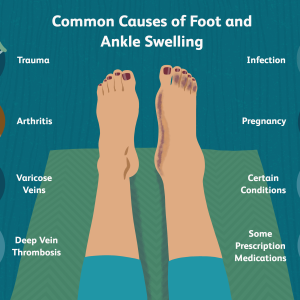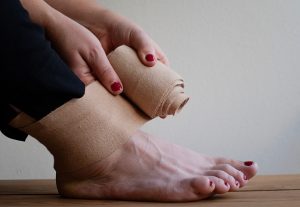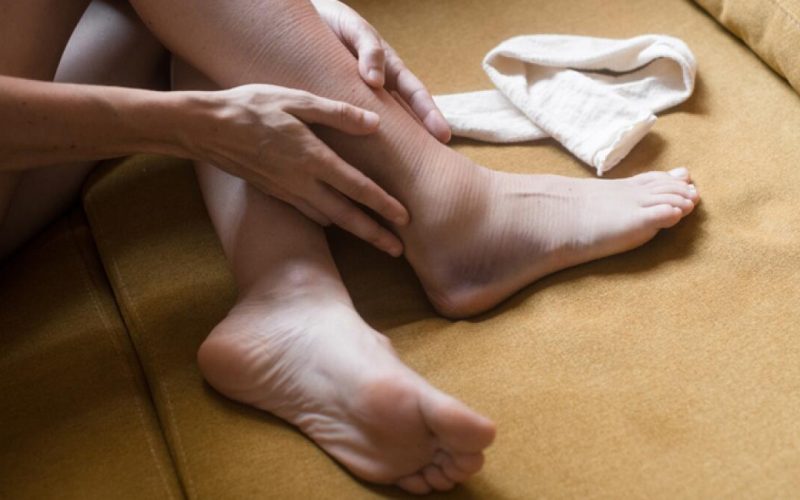Introduction
Swollen Ankle can be uncomfortable and worrying for many people. Whether you’re an athlete, pregnant, or lead a sedentary lifestyle, it’s important to know what causes swollen ankles and how to deal with them.
What Makes Ankles Swell?
1. Fluid Buildup
Swollen ankles often happen when your body retains too much fluid, causing swelling in different body parts, including the ankles.
2. Injury
Ankles can swell due to injuries like sprains or fractures. When you hurt your ankle, it disrupts the normal flow of blood and fluid, leading to swelling.
3. Sitting or Standing for Too Long
If you spend a lot of time sitting or standing without moving, fluid can gather in your lower limbs, causing swelling.
4. Pregnancy
Pregnant women commonly experience swollen ankles because of hormonal changes and increased pressure from the growing baby.
5. Medications
Some medications, such as those for high blood pressure or pain relief, can cause fluid retention and swelling in the ankles. Explore More About ( Manage Blood Pressure with Exercise)

Signs of Swollen Ankles
1. Visible Swelling
One of the main signs of swollen ankles is visible puffiness around the ankles.
2. Discomfort or Pain
Swollen ankles often come with discomfort or pain, especially when you walk or put weight on them.
3. Limited Movement
Swelling can restrict your ankle movement, making it hard to move your foot comfortably.
4. Skin Changes
Your skin over swollen ankles might look stretched, shiny, or discolored, and feel warm to the touch.

How to Ease Swollen Ankles
1. Elevate Your Feet
Raising your legs above heart level can help reduce swelling by improving fluid drainage.
2. Use Compression
Wearing compression socks or stockings can apply pressure to your ankles, reducing swelling and improving circulation.
3. Keep Moving
Regular exercise, like walking or swimming, can prevent fluid buildup in your ankles and improve circulation.
4. Stay Hydrated
Drinking enough water and avoiding salty foods can help maintain fluid balance in your body.
5. Try Massage
Gentle massages or using essential oils can promote fluid movement and reduce swelling in your ankles.
6. Watch Your Diet
Eating a balanced diet with plenty of fruits, vegetables, and lean proteins can reduce inflammation and support overall health.

When to See a Doctor
Seek medical help if your swelling is severe, sudden, or accompanied by other symptoms like pain, skin changes, or difficulty breathing.
Common Causes of Swollen Ankles
| Causes | Description |
|---|---|
| Fluid Buildup | Excess fluid retention in the body leading to swelling |
| Injury | Trauma or damage to the ankle causing inflammation |
| Prolonged Sitting/Standing | Immobility leading to fluid pooling in the lower limbs |
| Pregnancy | Hormonal changes and increased pressure on the ankles |
| Medications | Certain drugs causing fluid retention and swelling |
Conclusion
Swollen ankles can happen for various reasons, but understanding the causes and how to manage them is essential for your well-being. Simple steps like elevation, compression, and staying active can make a big difference. If you’re worried about your swollen ankles, don’t hesitate to seek medical advice for personalized help.










